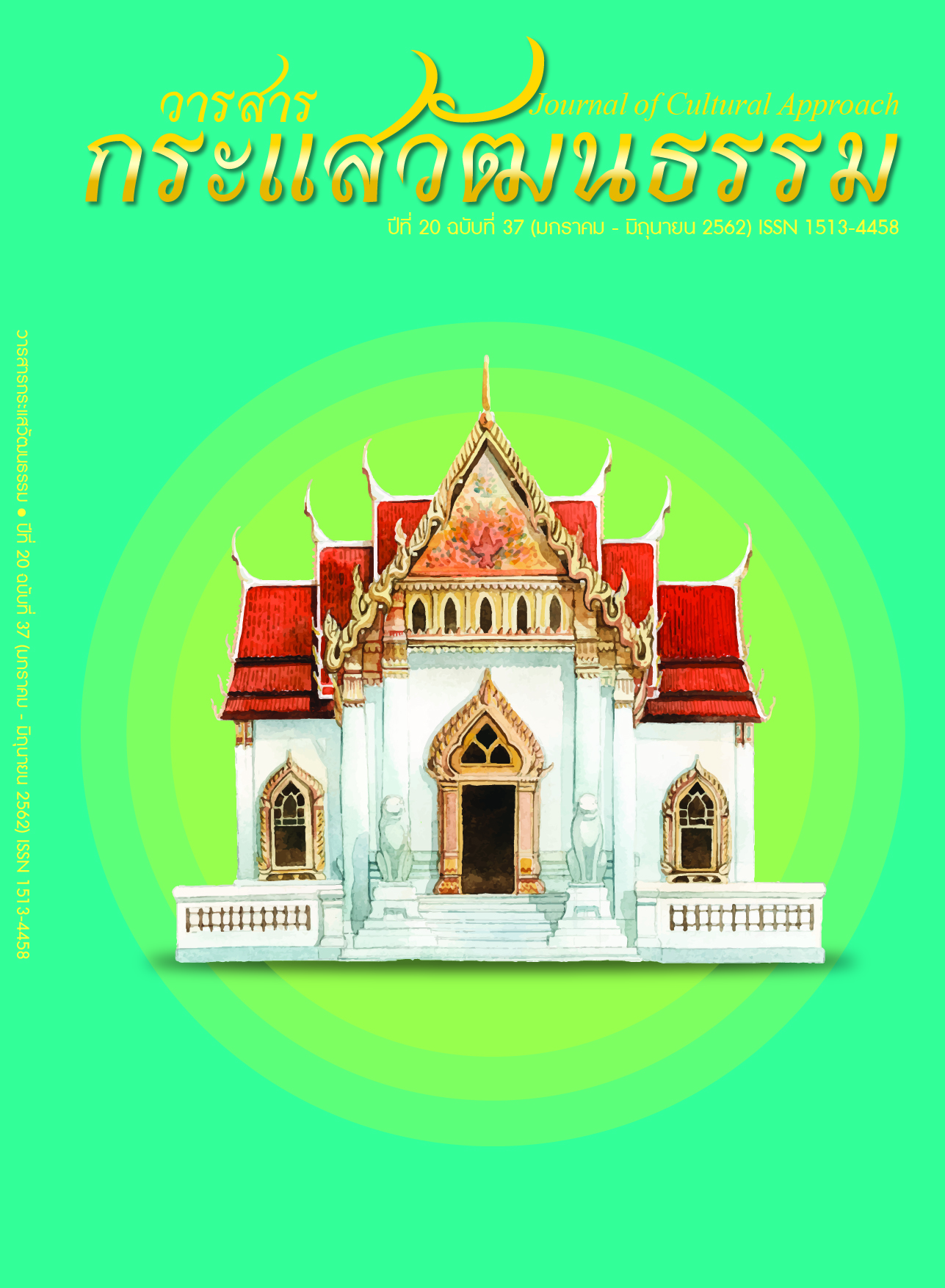An Increased Business Opportunity of Wellness Tourism as Premium Tourist Destination in Asian Countries
Main Article Content
Abstract
Wellness tourism is an attractive tourism for people who are seeking for an escape because of a pressure of work and everyday life. Especially, beauty and anti–aging, spas, fitness, mind–body, healthy eating, health–orientated treatment business and etc. are Wellness tourism is an attractive tourism for people who are seeking for an escape because of a pressure of work and everyday life. Especially, beauty and anti–aging, spas, fitness, mind–body, healthy eating, health–orientated treatment business and etc. are included in the global wellness tourism industry that has gained high revenues in many countries. The trend of wellness tourism is more valuable significantly and people will travel in many Asian Countries. Therefore, the preparation of wellness tourism business plays an important role to serve the people demands. These reasons mean people have to spend a day off, holiday, vacation to restore their well–being and health by escaping away from their repeated environment and land.
Article Details
Proposed Creative Commons Copyright Notices
1. Proposed Policy for Journals That Offer Open Access
Authors who publish with this journal agree to the following terms:
- Authors retain copyright and grant the journal right of first publication with the work simultaneously licensed under a Creative Commons Attribution License that allows others to share the work with an acknowledgement of the work's authorship and initial publication in this journal.
- Authors are able to enter into separate, additional contractual arrangements for the non-exclusive distribution of the journal's published version of the work (e.g., post it to an institutional repository or publish it in a book), with an acknowledgement of its initial publication in this journal.
- Authors are permitted and encouraged to post their work online (e.g., in institutional repositories or on their website) prior to and during the submission process, as it can lead to productive exchanges, as well as earlier and greater citation of published work (See The Effect of Open Access).
Proposed Policy for Journals That Offer Delayed Open Access
Authors who publish with this journal agree to the following terms:
- Authors retain copyright and grant the journal right of first publication, with the work [SPECIFY PERIOD OF TIME] after publication simultaneously licensed under a Creative Commons Attribution License that allows others to share the work with an acknowledgement of the work's authorship and initial publication in this journal.
- Authors are able to enter into separate, additional contractual arrangements for the non-exclusive distribution of the journal's published version of the work (e.g., post it to an institutional repository or publish it in a book), with an acknowledgement of its initial publication in this journal.
- Authors are permitted and encouraged to post their work online (e.g., in institutional repositories or on their website) prior to and during the submission process, as it can lead to productive exchanges, as well as earlier and greater citation of published work (See The Effect of Open Access).
References
[2] DeMicco, F. J. (2016). A Disney Strategic Approach to Patient/Guest Services in Hospitality Bridging Healthcare (H2H) and Medical Tourism and Wellness. The Routledge Handbook of Health Tourism, 261.
[3] Hydrant (http://www.hydrant.co.uk), S. designed and built by. (2016, June 23). Spa and Wellness Tourism on the Rise in Malaysia. Retrieved 29 October 2017, from https://www.oxfordbusinessgroup.com/analysis/rest–and–relaxation–efforts–under–way–boost–spa–and–wellness–tourism.
[4] Kickbusch, I., & Payne, L. (2003). Twenty–First Century Health Promotion: The Public Health Revolution Meets the Wellness Revolution. Health Promotion International, 18(4), 275–278. https://doi.org/10.1093/heapro/dag418.
[5] Lee, J., & Kim, H. (2015). Success Factors of Health Tourism: Cases of Asian Tourism Cities. International Journal of Tourism Cities, 1(3), 216–233.
[6] Lim, Y.–J., Kim, H.–K., & Lee, T. J. (2016). Visitor Motivational Factors and Level of Satisfaction in Wellness Tourism: Comparison between First–Time Visitors and Repeat Visitors. Asia Pacific Journal of Tourism Research, 21(2), 137–156.
[7] McGroarty, B. (n.d.). Statistics & Facts. Retrieved 26 October 2017, from https://www.globalwellnessinstitute.org/press–room/statistics–and–facts/
[8] Ministry of Tourism & Sports. (n.d.). Tourist Arrival. Retrieved 26 October 2017, from http://www.mots.go.th/mots_en57/main.php?filename=Tourist_arrival
[9] Musa, G., & Thirumoorthi, T. (2016). Tourism in Malaysia. The Routledge Handbook of Tourism in Asia.
[10] Saptandari, P. (2014). Indonesian Spa and Traditional Wellness: Gender, Health and Life Styles. Health, 5(3), 20–31.
[11] SCB Economic Intelligence Center (EIC). (2017, October 5). Wellness Tourism. Retrieved 26 October 2017, from http://marketeer.co.th/archives/132134.
[12] Sheldon, P. J., & Bushell, R. (2009). Introduction to Wellness and Tourism. In Wellness and Tourism: Mind, Body, Spirit, Place (pp. 3–18). Retrieved from http://researchdirect.westernsydney.edu.au/islandora/object/uws%3A25883/
[13] Smith, M., & Puczkó, L. (2008). Health and Wellness Tourism. Routledge.
[14] Tolkach, D., Chon, K. K., & Xiao, H. (2016). Asia Pacific Tourism Trends: Is The Future Ours To See? Asia Pacific Journal of Tourism Research, 21(10), 1071–1084.


